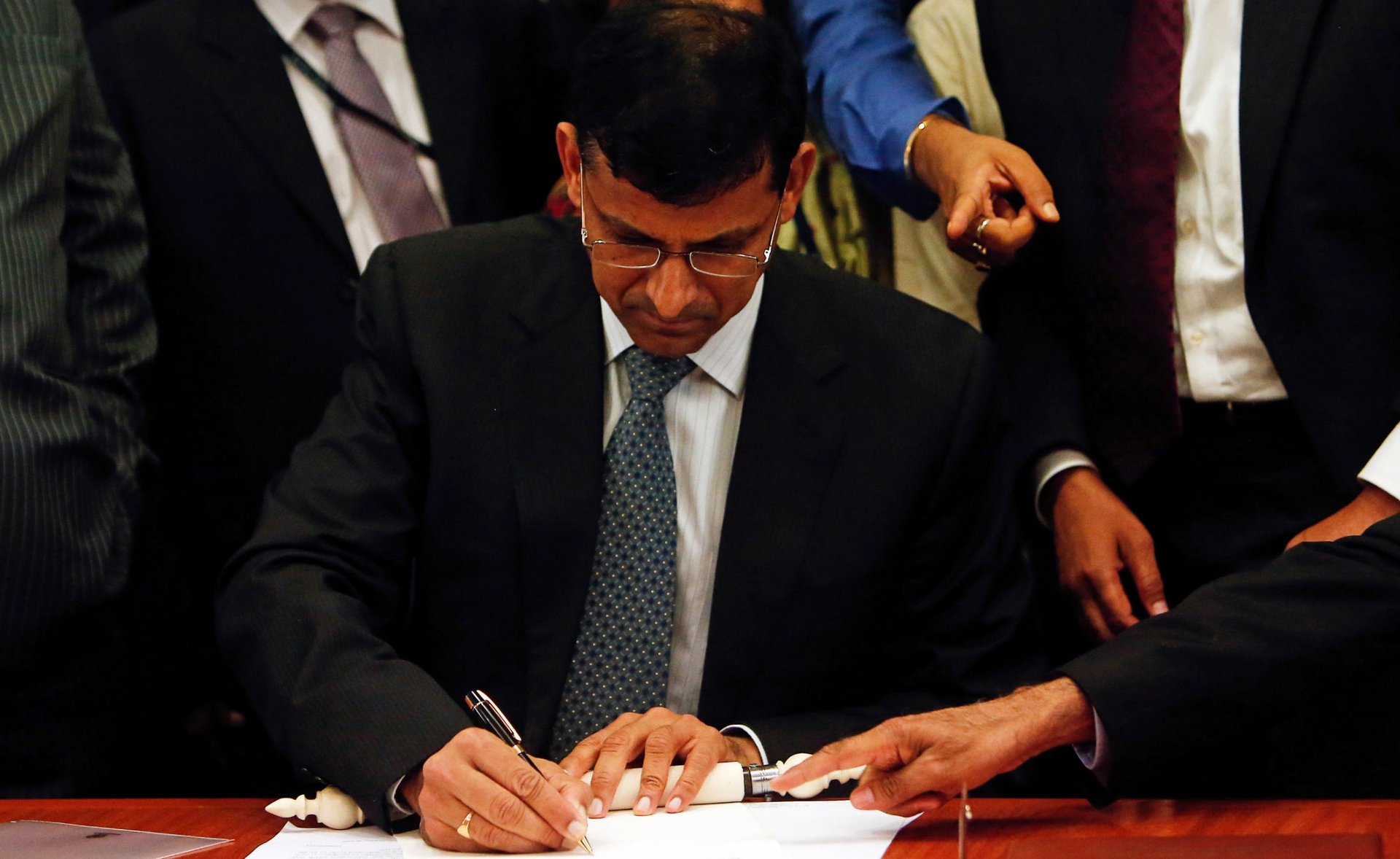Finally, the Indian government agrees to leave the central bank alone
In India, the central bank is widely considered one of the country’s best-run institutions, balancing the financial interests of both rich industrialists and the 826 million citizens living on less than $2 a day. Considering the political pressures it faces, it’s a wonder the bank functions at all. (In a recent global ranking of central bank independence (pdf), the Reserve Bank of India came in last among 89 countries.) But those pressures look likely to fade under the new governor, Raghuram Rajan.


In India, the central bank is widely considered one of the country’s best-run institutions, balancing the financial interests of both rich industrialists and the 826 million citizens living on less than $2 a day. Considering the political pressures it faces, it’s a wonder the bank functions at all. (In a recent global ranking of central bank independence (pdf), the Reserve Bank of India came in last among 89 countries.) But those pressures look likely to fade under the new governor, Raghuram Rajan.
The Economic Times reports that top finance ministry officials and the new central bank governor negotiated an informal agreement to clearly demarcate territories. Under the agreement, the Reserve Bank of India will have complete freedom to set monetary policy. In return, the government will get to dictate terms on financial sector reforms.
It’s a win-win deal. No longer burdened by meddling from New Delhi, the Reserve Bank will have greater leeway to focus on fighting inflation and supporting the rupee, rather than juicing growth. The government will have greater say over what the central bank has termed “financial inclusion,” the politically sensitive mandate to extend banking services to more than half of India’s adult population.
The agreement followed the breakdown of relations between the the central bank and finance ministry during the tenure of the last central bank governor, D Subbarao, who stepped down on Sept. 3. The finance minister publicly pressurized the RBI to cut interest rates to support growth, while Subbarao urged the government to improve its financial position. As a parting shot, in his last speech as governor, Subbarao said the rupee was struggling more because of government policies that worsened the current account deficit, even as others were blaming external factors the looming withdrawal of the Federal Reserve’s easy money policy.
The RBI’s independence is not enshrined in law. The 1934 act (pdf) governing its operation gives the government the power to issue policy directions. The government also appoints the central bank governor and four deputies. Despite these limitations, the RBI has a decent record of balancing growth and inflation. Its conservative approach helped the Indian financial system escape the worst of the 1997 Asian crisis and 2008 global banking crisis.
Now that India finds itself in its worst domestic economic crisis since 1991, the RBI needs all the credibility it can get. Steering clear of government influence is a good first step.